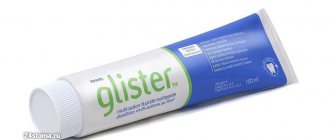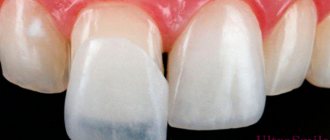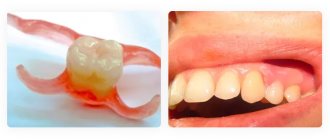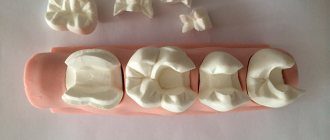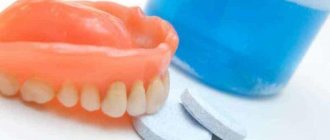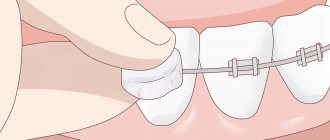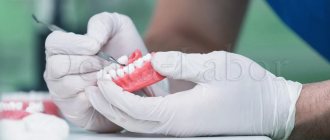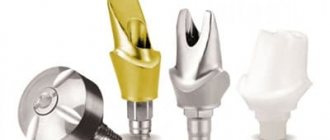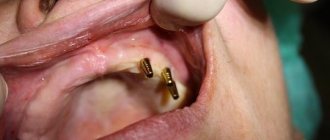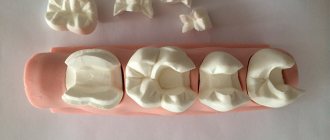Leptotrichosis is a disease of the oropharynx caused by the bacterium Leptothrix buccalis. This is a conditionally pathogenic microflora, since leptotrichia constantly live in the human oral cavity. In order for the disease to develop, some provoking factor is necessary. Children are very often susceptible to this disease. The bacteria multiply quickly, usually affecting the back of the tongue, but can also develop on other surfaces of the oral cavity.
How dangerous is leptothrix and where does it come from?
Long-term parasitism of the bacterium on the oral mucosa leads to infection of nearby tissues and the development of leptotrichosis sepsis. Often manifested in the form of oral stomatitis. Some experts consider leptotrichosis to be similar to HIV infection.
The disease was found in 5% of women undergoing gynecological tests - vaginal smears. Recent foreign studies have made it possible to determine the connection between leptotrichia and bacterial vaginosis (vaginal dysbiosis). The established connection suggests that leptothrix is one of the signs of asymptomatic vaginosis in women.
It is quite easy to catch this infectious pathogen. The microorganism is transmitted sexually and domestically: through the water of stagnant reservoirs, insufficiently clean tap water, dirty bed linen, towels, etc. That is, it is possible to infect a sexual partner with leptotrichosis during sex. It is advisable for both to undergo treatment.
There is an opinion that intrauterine devices are a common cause for the development of the disease.
Back to contents
Causes of infection
Most patients become infected with leptotrichosis while swimming in dirty pools or open water. In some situations, pathogenic bacteria are transmitted from a partner during sexual intercourse. Leptotrichia (5%) are present in the body of every person, they are opportunistic until they begin to reproduce.
Activation of bacteria occurs against the background of numerous provoking factors:
- AIDS;
- hypothermia of the body;
- diabetes;
- deficiency of vitamins, in particular B, C;
- malignant processes;
- candidiasis in the oral cavity;
- damage to the digestive system;
- blood diseases;
- low immunity;
- bad habits (abuse of alcoholic beverages, tobacco products);
- dysfunction of the autonomic nervous system;
- dystrophic changes in the mouth (keratosis, hyperkeratosis);
- treatment with certain antibacterial drugs or corticosteroids.
Chronic somatic and endocrine diseases contribute to the development of pathogenic microflora. The same applies to a poor ecological environment, prolonged stress and overexertion.
Leptothrix in a smear during pregnancy: diagnosis and consequences
It is worth noting a bacterium from the same family - Leptotrichia amnionii. French scientists managed to isolate it from the amniotic fluid of women who gave birth prematurely. The bacterium caused chorioamnionitis - inflammation of the membranes. The result of this was premature rupture of amniotic fluid and termination of pregnancy.
But the negative impact on the fetus did not stop there. In addition to prematurity and all the problems associated with it, bacteremia was recorded in infants, the presence of the same infectious pathogens in the blood as in the amniotic fluid (water).
Apparently, the bacterium has this effect due to a physiologically determined decrease in the mother’s immunity during pregnancy.
Only the attending physician, a gynecologist who is managing the pregnancy, can confirm or refute the diagnosis. Expectant mothers undergo flora smears at least twice during pregnancy. And if the analysis turns out to have a lot of leukocytes, a competent doctor will prescribe another, additional test - vaginal culture . It is also called cultural research. It takes about a week to complete. Task: to identify which specific microorganisms caused the inflammatory process and which antibiotics they are sensitive to, that is, to prescribe the most effective drug.
It is in the culture that Leptothrix is detected. It must be treated necessarily in the presence of symptoms and (or) in case of confirmation of its subtype - amnionii, even a small amount of which can lead to fetal death.
The PCR test, which is also taken by expectant mothers, helps to identify hidden sexually transmitted infections. They often occur in parallel with leptotrichosis and are dangerous for the fetus.
Back to contents
Classic symptoms
Leptothrix in a smear (the treatment is selected by the doctor, taking into account the diagnostic results and the individual characteristics of the patient’s body) is accompanied by pronounced clinical signs.
Considering the area affected by pathogenic bacteria, patients notice the following symptoms:
| Name | Description |
| Oral infection |
|
| Vaginal infection |
|
| Damage to the male body |
|
During the period of bearing a baby, the disease is characterized by copious liquid discharge, which constantly causes wet underwear.
If any symptoms appear, it is important to go to the hospital promptly. Diagnosis and treatment are carried out by a general practitioner and gynecologist. The specialist will conduct an examination, prescribe additional examination and select the most effective treatment, taking into account the results obtained.
Clinical picture: symptoms and signs
Affecting the mucous membranes of the vagina and cervix, the pathology manifests itself as a gray coating on the walls, and vaginal discharge also becomes gray. And in addition, redness, itching and burning, which intensify during sex. The female body does not show any other reactions. At least in the “non-pregnant” state and with normal immunity.
If a woman has concomitant inflammatory diseases of the pelvic organs, for example, endometritis, parametritis, salpingitis, then broader symptoms are possible. This is an increase in temperature to 39-40 degrees, headache and muscle pain, dehydration. General intoxication of the body occurs. Such symptoms appear mainly in expectant mothers when leptothrix enters their blood. The same bacterium provokes severe abdominal pain in them. The amniotic membranes are also affected. A child becomes infected with the bacteria in utero .
Back to contents
Features of the pathogen
Leptothrix are gram-negative, filamentous bacteria that do not form spores and prefer an anaerobic environment with very little oxygen (such bacteria are called microaerophilic).
Their name comes from Latin words meaning “fine hair”. In a smear, leptothrix looks like long thin or thick rods, which are arranged in chains resembling hairs. The external resemblance to actinomycete fungi initially led to a classification error: for a long time leptothrix was classified as a fungus.
They are usually grouped under the general name of the genus Leptothrix species (spp.).
Some researchers attribute Leptothrix to a special variety of lactobacilli, modified under the influence of environmental conditions.
They noticed that some women who go to gynecologists with complaints of heavy discharge have bacteria in their smears that form long chains.
In women who do not have symptoms of infection, lactobacilli are grouped in chains ranging from 5 to 15 microns in length. In women with complaints of heavy discharge, the length of one chain can reach 40-75 microns.
Until now, in the medical literature, the names of bacteria leptothrix and leptotrichia are considered synonymous. This is due to the confusion and difficulty of cultivating them.
Attention! In the new classifications, these are two different genera - Leptothrix and Leptotrichia! Be careful, bacteria cause completely different diseases!
Treatment regimens for leptothrix during pregnancy and beyond
When treating vaginal symptoms of pathology, standard regimens are used to combat bacteria. In the acute phase of the disease, topical antifungal drugs (vaginal suppositories and tablets) are used:
- "Gyno-travogen" (iconazole nitrate) - vaginal suppositories (0.6 g), 1 time per day;
- "Clotrimazole" - tablets (0.1–0.2 g), cream (1–2%);
- "Miconazole", "Gynodactarin" - suppositories (0.1 g);
- "Econazole", "Ginopevaril" - suppositories (0.15 g).
To get rid of bacteria throughout the body, systemic drugs are used, they guarantee relief from vaginal symptoms:
- “Orungal” - take a course of capsules (0.1 g) for 3 days;
- "Ketoconazole" - tablets (0.2 g) 5 days;
- "Diflucan" - capsules (0.05–0.15 g).
Antifungal antibiotics are also used:
- “Pimafucin” - a course of tablets, designed to be taken 4 times a day, 1 piece, 7-12 days;
- "Amphoglucamine" - tablets, 2 times a day, 1 piece, 10-14 days;
- “Nystatin” - tablets (500 thousand units) 4 times a day, course - 2 weeks;
- Clindamycin is an antibiotic for oral administration, the dosage depends on the severity of the disease.
Broad-spectrum antimicrobial and combination drugs:
- metronidazole - tablets for oral administration, 500 mg 2 times a day for a week;
- Terzhinan - vaginal tablets, course on average 10 days.
Vaginal antiseptics:
- "Hexicon" (chlorhexidine);
- "Betadine" (povidone-iodine).
1-2 times a day for a week.
After treatment with any vaginal antimicrobial drugs, the amount of beneficial flora and lactobacilli in the vagina decreases; you can simply wait until everything returns to normal on its own or use drugs to restore the microflora:
- "Lactozhinal";
- "Acilact";
- "Lactonorm";
- "Vagilak";
- "Gynoflor" and the like.
For the treatment of pregnant women, it is permissible to use only a local type of therapy - suppositories, vaginal balls, creams, etc. Other drugs can harm not only the health of the mother, but also the unborn child.
The pathology is usually asymptomatic and the detection of leptothrix bacteria in a smear (if there are no signs of an inflammatory process) is not at all a reason for immediate treatment, since it is also detected in healthy people. This is an opportunistic microorganism. The only exceptions are expectant mothers and a certain subspecies of bacteria.
If you need to undergo treatment for dysplasia, “cauterize the erosion”, and leptothrix is detected in the smear, while the number of leukocytes is normal, there are no inflammatory manifestations - this is not a reason to postpone the procedure.
Back to contents
This is also interesting
- Tank culture from the cervical canal for flora and sensitivity to antibiotics
- What does coccobacillary flora mean, does it need to be treated and how?
- Streptococcus agalactiae in a smear from the vagina, urethra and cervical canal - what to do if detected
Reviews and comments
- Mikhail 41 years old:
March 27, 2022 at 4:44 pmHello. A year ago I saw a dermatologist about seborrheic dermatitis and cheilitis. I was treated with antifungal tablets for 1 month. Symptoms appeared after some time and appeared again. The dermatologist looked at the root of the tongue and said that it was covered with a yellowish-brown coating, then she prescribed a smear from the root of the tongue. They found leptotrichia. She prescribed metronidazole. Now about a year has passed. The tongue is yellowish-brown again, the drool is yellow. The immune system is weak, stress. A year ago I donated blood: lymphocytosis, neutropenia. The hematologist-oncologist said that he didn’t see anything wrong. That there were signs of an infectious inflammatory process. And to re-donate the blood in a month. But he didn’t send it. 2 months ago I took ampicillin for 7 days because of acute respiratory viral infection. I am taking antipsychotics. Now my tongue is yellowish-brown again. I have stomatitis. Tell me how to get rid of leptothyrichia posta
Answer
How to treat Leptothrix in the mouth
To treat pathology that develops in the oral cavity, both conservative and physiotherapeutic methods are used.
Conservative treatment of leptothrix in the mouth consists of taking a course of drugs that have an antibacterial effect. Among them are the following:
- Tetracycline;
- Clindimicin;
- Levomycetin;
- Metronidazole.
A course of physiotherapeutic procedures through the use of a laser or the use of dosed ultraviolet irradiation of a certain spectrum will also help to overcome the infection.
You can speed up the healing process by taking multivitamins, the action of which is aimed at strengthening the body's immune system.
Only as a result of comprehensive treatment can a rapid recovery be achieved.
Dosage form and composition of the drug Terzhinan
Terzhinan is a combined broad-spectrum antimicrobial drug. It is produced in the form of tablets for local and intravaginal use. These are suppositories similar to suppositories, but have a flatter shape and differ in structure. They do not contain wax.
The packaging of the drug contains 6 or 10 yellowish tablets, packaged in plastic or metallized blisters with individual cells. One dose of the medicine contains 4 active ingredients:
- 200 mg. tenidazole: an antibiotic effective against anaerobic bacteria;
- 100 mg. neomycin: an aminoglycoside that destroys proteins of aerobic microbes;
- 100,000 IU nystatin: antifungal agent;
- 4.7 mg. prednisolone derivative: glucocorticoid hormone with anti-inflammatory effect.
Auxiliary compounds of the drug: starch, lactose, silicon dioxide, magnesium stearate and others.
Main purposes for the drug Terzhinan
According to the instructions, vaginal tablets are indicated for use:
- for trichomonas and vaginitis caused by pyogenic pathogens
- acute and chronic colpitis of nonspecific or mixed origin, including recurrent ones;
- vaginal candidiasis;
- vaginal dysbiosis;
- ureaplasmosis.
To prevent the development of infectious inflammation in the uterine cavity and adjacent tissues, Terzhinan is prescribed:
- before childbirth;
- insertion of intrauterine devices;
- surgical interventions;
- carrying out abortions, diagnostic curettages;
- before checking the patency of the fallopian tubes.
Medical experience shows that the drug is much more effective than its analogues in treating complicated cases of diseases and rarely causes disturbances in the internal microflora. Terzhinan is better than other intravaginal medications in relieving the symptoms of recurrent thrush and exacerbations of ureaplasmosis.
